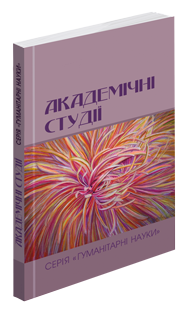Abstract
The article analyzes contemporary Ukrainian comics created within the framework of the project «My Non-Fake Story» by the creative team of the social comics magazine «Inker». The works considered include «Blind Spots», «I Am Not Second-Rate», «Labyrinths of Lies» and «In the Trap», which are distinguished by their documentary basis, thematic focus on the real testimonies of the characters and the desire to deconstruct Russian propaganda myths. The transformation of individual life stories into artistic narratives with a specific visual language makes them accessible to a wide range of readers. The emphasis is on the fact that such comics work with a double lens: on the one hand, they document the experience of specific people, and on the other, they transfer it to the sphere of public knowledge and collective memory. The scientific novelty of the article lies in the fact that the work of «Inker» is considered for the first time as an artistic and discursive project that forms a specific segment of modern Ukrainian military discourse, which acquires new sociocultural significance and becomes one of the means of recording experience, resistance, and self-representation. The study traces the continuity of the tradition of comics aimed at understanding the traumatic events of the 20th–21st centuries, in particular the Holodomor, World War II, the Holocaust, the Chernobyl disaster, Middle Eastern conflicts, etc. It is shown that the paintings of «Inker» simultaneously perform cognitive, memorial, and communicative functions, and also contribute to the formation of critical thinking and counteraction to manipulative practices. In the conditions of modern hybrid warfare, where the enemy’s weapon is not only military force, but also information manipulation, comics appear as a tool of resistance to attempts to rewrite history and destroy Ukrainian identity. Promising areas for further studies are the study of intermedia strategies, the study of the reception of Ukrainian social comics in the academic and cultural environment.
References
Горбач Н. Авторський анімалізм роману «Маус» В. Шпігельмана. Мова. Література. Фольклор. 2022. № 2. С. 76–84.
Гоц А., Дьомін О., Лановець Д. Сліпі плями. URL: https://inker.world/slipi-pliamy/?v=5269f4d75f5b
Гудошник О., Бучарська І. Медіальність українського документального коміксу під час війни. Вісник Національного університету «Львівська політехніка». Журналістика. 2023. № 1. С. 70–79.
Деркачова О. Осмислення подій російсько-української війни у коміксах «Кіборги». Література й історія : матеріали Всеукраїнської наукової конференції (17–18 листопада 2022 р.) / редкол. : Н. Горбач, В. Ніколаєнко, І. Бакаленко та ін. Запоріжжя : Запорізький національний університет, 2022. С. 75–78.
Дьомін О., Лановець Д. Лабіринти брехні. URL: https://inker.world/labirynty-brekhni/?v=5269f4d75f5b
Дьомін О., Лановець Д., Костішина І. Я не другий сорт. URL: https://inker.world/ya-ne-druhyy-sort/?v=5269f4d75f5b
Колесник О. С. Поетика графічного роману: синтез мистецтв та транспозиції. Актуальні проблеми історії, теорії та практики художньої культури : збірник наукових праць. 2013. Вип. 31. С. 301–307.
Лановець Д., Дьомін О., Некрасенко М. У капкані. URL: https://inker.world/u-kapkani/?v=5269f4d75f5b
Сокирська О., Флоренца О. Комікс і графічний роман у контексті сучасної лінгвокультурології. Актуальні питання гуманітарних наук : міжвузівський збірник наукових праць молодих вчених Дрогобицького державного педагогічного університету. 2024. Вип. 79. Том 2. С. 207–213.
Busch B., McNamara T. Language and Trauma: An Introduction. Applied Linguistics. 2020. V. 41. P. 323–333.

This work is licensed under a Creative Commons Attribution 4.0 International License.

